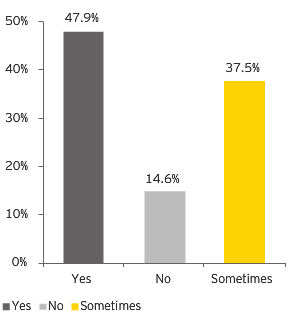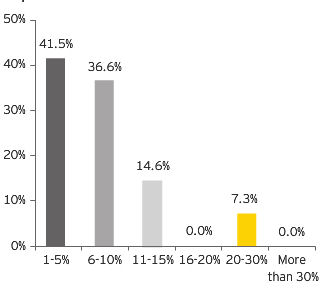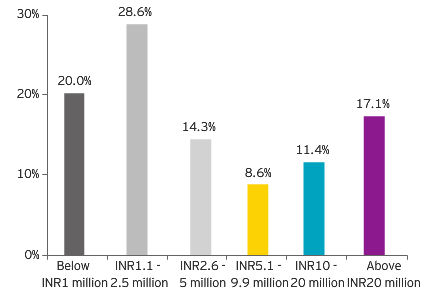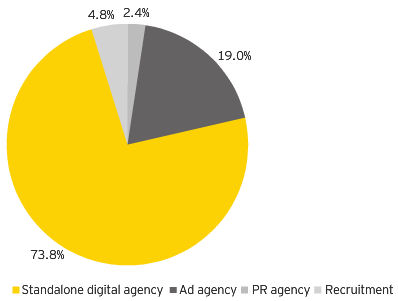How are brands using social media in India?
PR Insight
FleishmanHillard’s decision to rebrand itself as a comprehensive communications firm in May this year, has thrown the focus back on what services a PR agency should offer. Where digital is concerned, Indian PR agencies may no longer have a choice but to include it in its offerings, as Indian brands are taking to social media strongly. Digital media experts predict a sharp rise in marketing budgets and social media integration with customer lead generation functions.
Ernst & Young’s latest report India Trends Study 2013, studies in detail the tactics, priorities and emerging trends thrown up by 48 participating professionals who manage digital services, from firms as diverse as Harley-Davidson India, MTV India, Microsoft Corporation India Pvt. Ltd., MTV India, Pepsi India, Panasonic India, P&G India, SAP India Pvt. Ltd., Bharti Airtel Ltd., BMW India Pvt. Ltd. and Café Coffee Day.
Brand engagement is emerging as stronger trend than brand awareness, measuring awareness a challenge
As per the study, an overwhelming 95.7 per cent of social media-savvy organisations in India surveyed said they use the medium to build communities and advocates to help in creating a positive word of mouth buzz. Ernst & Young says this is a change from two years back, when organisations put a one-way metric such as awareness as the top reason for using social media.
This has implications for brand behaviour and strategies, as brand engagement and conversations take centre stage rather than pure brand awareness. “The brands have to think of ideas to create conversations with consumers and make brand communication have a more humanised and personalised appeal. They should cease to be brands and behave more like human beings,” says Harshil Karia, Online Strategist and Co-founder of FoxyMoron.
Dinesh Mishra, Advisory Director and Customer Practice Leader (India) at Ernst & Young LLP, points out that this means that, “On an advanced level, brands need to find out what their customers and fans are expecting from them on their communities. For this, they need to invest time and resource in conducting some research among their customers and fans, as this can be very specific for each industry, organisation, and brand. Managers need to be creative when designing engaging applications and programmes for their target audiences and think specifically for this medium.”
Even though awareness has entered the dictionary of brands and social media, measuring it is a challenge. Ekalavya Bhattacharya, Head of Digital at MTV India, says using only likes and fans as measurement tools often give a false sense of security to brands. They feel more in control when they see numbers on an excel sheet! Bhattacharya points that, “Most of the brands that we work with now also talk about conversation reach, engagement, purchase intent, lead referrals, sentiment analysis. Digital and social media allows you to measure and put a figure on likes and number of fans. The others are a little difficult to put a price on. Benchmarks are missing – because this cannot be the same for two brands – so comparison becomes difficult."
Facebook still top destination for brands, followed by Twitter and YouTube
In terms of platforms, Facebook with over 62 million users in India is the favourite spot for social media campaigns. 89.6 per cent of all surveyed organisations placed Facebook as the most important platform for engagement. E&Y points out that there were more than 100 Facebook campaigns in India in 2012, which translates to more than eight campaigns running simultaneously per month. Facebook is followed by Twitter, YouTube and blogs as the favoured channel of communication.
Do you regularly engage with bloggers/influencers?

Source: India Trends Study 2013, Ernst & Young
Harshil Karia does not see the basic mix of to destinations for social media changing soon, “Social media platforms are always emerging. But, social media by virtue is ‘social’, so unless the consumers witness large-scale migration of their peers to a particular platform, they will not shift to it. Each platform is being used for a specific purpose; Google+ for Hangouts, Foursquare for loyalty, Instagram for photo-stories. So brands can use each of them for what they are worth, but the core platforms will remain the same.”
Social media as lead generator, customer research and customer care platform
The study also shows that 16 per cent of the surveyed organisations said they use social media to build community, generate leads, for customer service and to highlight news and research.
Karia suggests, “This trend will increasingly strengthen. As e-commerce evolves, every consumer is mapped and retargeting comes into play, linking engagement to sales. Since social is such an open sphere, freedom of speech is immense, and this will facilitate lead generation which is very crucial.”
Dinesh Mishra agrees that social media will continue to emerge as a point for sales leads generation and customer service. “Customer service cannot be separated from marketing on social media as customers and fans don't see it that way. To them, the brand they follow is one entity and they need answers to their questions irrespective of whether it a marketing related question or customer care related question. Speed of data collection and response will be critical and new models of managing this will emerge.”
Pranav Kumar, Managing Director (India) of Bite says that B2B companies need to use social media better, “While social media is an obvious choice for consumer brands, we think that B2B has some catching up to do. While the fundamentals haven’t changed, new social and digital channels are changing tried and trusted staples of direct marketing, public relations, events and advertising. In today’s ‘always on’ world the customer (and the customer’s customer) are always connected creating data that can be captured, mined and analysed for competitive advantage. Engagement is as critical in the B2B context especially with the rise of what we call as the ‘Prosumer’ wherein ordinary consumers’ crossover to purchase professional or business products. There’s a definite consumerization of B2B marketing and therefore a clear social media opportunity for driving lead generation, without being too ‘salesy’!”
Budgets set to rise
Advanced services call for enhanced budgets. The E&Y study shows that almost half of the social-media savvy organisations spend around one to five per cent of their marketing budget on social media. Average social media budget levels hover at less than ten million Rupees. Compare these spends from top organisations with the INR 1070 million advertising budget of Godrej Consumer Products in December 2012 quarter or the INR 990 million advertising budget of Colgate Palmolive in 2012.
How much percentage of your marketing budget do you spend on your social media initiatives?

What is your social media budget in a year?

Source: India Trends Study 2013, Ernst & Young
But digital agencies feel this is set to rise sharply, says Harshil Karia: “The prediction is that it will rise to 30 to 40 per cent per annum. It is an exciting time in the world of social media where every platform is evolving and providing innovative solutions to brands. Along with this, creative agencies are also upping their ante and bringing more to the table. This will tempt the brands to invest more in digital."
Driving the increase in budgets is also the increasing sophistication of brands on social media. The next wave of social media led with content will see a remarkable increase in spends says Ekalavya Bhattacharya: “Social Media is not limited to having Facebook and Twitter presence. That was the first wave of social media. Brands are now realising the importance of content in the social and digital space. Advertising consumption levels are dropping. Brands are looking into branded content. It’s no longer about ‘Buy my product’, it’s shifting to ‘My product is so cool’. The nirvana status is when your consumers become your evangelists and tell their friends – ‘Wow! That brand is so cool!”
Impact on PR and agency structure
The India Trends Study 2013 report found that among the surveyed social-media savvy organizations 73.8 per cent have chosen standalone digital agencies as compared to PR, ad agencies, or freelancers. The reason behind this can be due to the specialized skills and wide array of services under one roof that comes along with digital agencies.
MTV India's Bhattacharya feels that “PR is a component of social media management, some brands get it. We at Viacom18 do so. If the PR team works with the digital/social media team it solves a lot of issues.
“My personal suggestion for an operational structure would be to manage everything in-house. Have good content writers and a great designer or two. Look at outsourcing video production and tech related stuff. Have someone who is good with analytics, so you can figure what’s working and what is not. Work closely with the PR team when it comes to contacting influential people or getting information out.”
Many experts would disagree with that assessment and feel that PR; with its experience in handling communities, it's better placed to lead the conversational and content heavy engagement that is emerging on social media.
What is the type of agency you currently have?

Source: India Trends Study 2013, Ernst & Young
Both PR and ad agencies handle social media initiatives of some of the big organisations in the country. Some organisations find better synergy by giving their communication mandates to one organisation instead of multiple ones.
Regardless of which department ends up leading social media engagement, PR cannot afford to ignore the opportunity to grow the PR pie and build a set of services that match what the market is demanding.
If you enjoyed this article, you can subscribe for free to our weekly event and subscriber alerts.
Featured

PR professionals share their views on journalists publicly calling them out on story pitches

Auto blogger renders unconditional apology to Value 360 for defamatory posts

Hottest Indian startups of 2020, Paytm, Dreams 11 lead the charge: Wizikey Report




